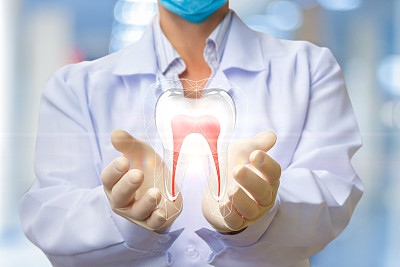Essential Guide to Understanding When and How to Extract a Tooth Safely and Effectively
Summary: Extracting a tooth is a common dental procedure that can be necessary for various reasons, including decay, damage, or overcrowding. Understanding when and how to safely and effectively perform tooth extractions is crucial for both dental professionals and patients. This guide outlines the essential knowledge about identifying when extraction is necessary, the preparation required for the procedure, the extraction techniques used, and the critical aftercare needed for recovery. By following these guidelines, one can ensure a smoother experience and minimize complications associated with tooth extractions.
1. Identifying When Tooth Extraction is Necessary

Tooth extraction may be required for several reasons, the most common being severe decay. When a tooth is beyond saving due to extensive caries, extracting it can prevent further infection and complications. Dental professionals often assess the condition of the teeth through X-rays to determine the extent of damage and the viability of restoration options.
Another scenario where extraction is recommended is for overcrowding. In orthodontics, particularly, removing certain teeth may be necessary to create space for proper alignment. Insight from an orthodontist can guide the decision-making process to ensure optimal results.
Lastly, impacted wisdom teeth often need to be extracted. Common in late adolescence and early adulthood, these teeth can cause pain and put pressure on adjacent teeth if they do not emerge properly. Recognizing the signs of impaction, such as swelling and discomfort, is vital for timely intervention.
2. Preparing for the Tooth Extraction Procedure
Preparation is key to a successful tooth extraction. Prior to the procedure, a thorough dental examination and imaging tests, like X-rays, are performed to gain insights regarding the tooths position and surrounding anatomy. This information helps the dentist assess potential complications that may arise during the procedure.
Patients must be informed about the extraction process, including anesthesia options available. Understanding whether local or general anesthesia will be used can help alleviate any anxiety associated with the procedure. Additionally, discussing medication history and allergies is important for preventing adverse reactions.
Moreover, dietary recommendations should be communicated prior to the appointment. Patients are usually advised to avoid food or drink for a specific time frame before the extraction. This ensures a safer environment, especially if sedation or general anesthesia is involved.
3. Different Techniques for Tooth Extraction
There are primarily two methods used for tooth extraction: simple extraction and surgical extraction. A simple extraction is performed on visible teeth that have fully erupted. Dentists typically use specialized tools to loosen the tooth before extracting it without making any incisions in the gums.
On the other hand, surgical extraction is necessary for teeth that are not easily accessible, such as impacted teeth. This procedure involves making incisions in the gum tissue to access the affected tooth. Dental professionals must be skilled in surgical techniques to avoid damaging surrounding tissues during the extraction process.
Post-extraction, the area must be carefully examined for any complications, such as excessive bleeding, to ensure a successful procedure. Immediate care can reduce the risk of infection and promote healing.
4. Aftercare and Recovery Following Tooth Extraction
Aftercare is crucial following tooth extraction to promote healing and reduce discomfort. Patients are typically advised to bite down on gauze for several hours to control bleeding. Ice packs can be applied to the outside of the cheek to minimize swelling within the first 24 hours after the procedure.
In terms of diet, soft foods and liquids are recommended immediately following the extraction. Hard, crunchy, or spicy foods should be avoided to prevent irritation to the extraction site. Hydration is also essential for recovery.
Furthermore, patients should follow the prescribed pain management regimen and be aware of the signs of complications, such as increased pain or fever. Regular follow-up appointments allow dental professionals to monitor healing and address any post-operative concerns.
Summary:
Understanding the factors that contribute to the necessity of tooth extraction, along with the comprehensive preparation and recovery protocols, is vital for ensuring a successful outcome. By gaining insight into the techniques and aftercare necessary for safe and effective tooth extraction, both patients and practitioners can foster a smoother experience.
This article is compiled by Vickong Dental and the content is for reference only.


